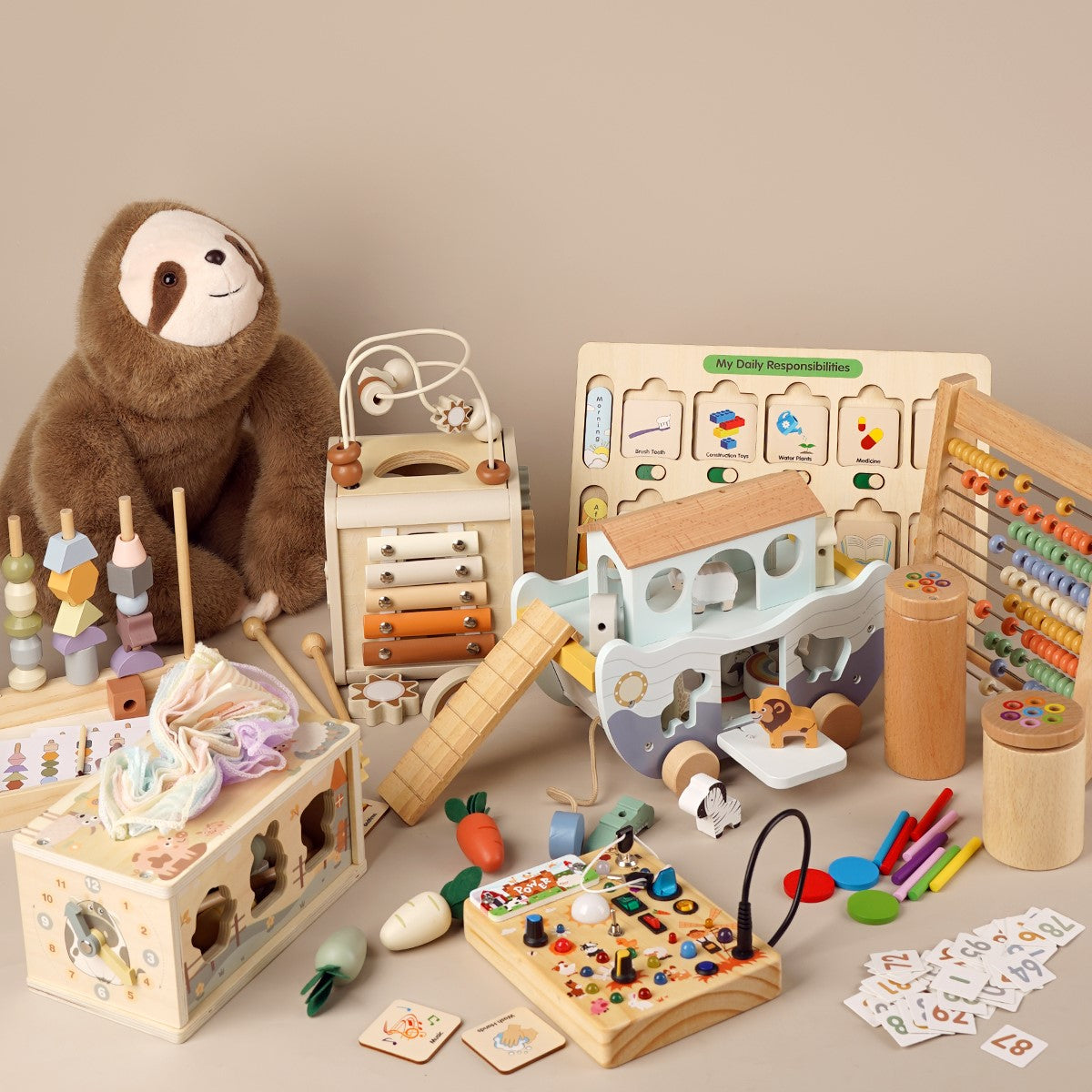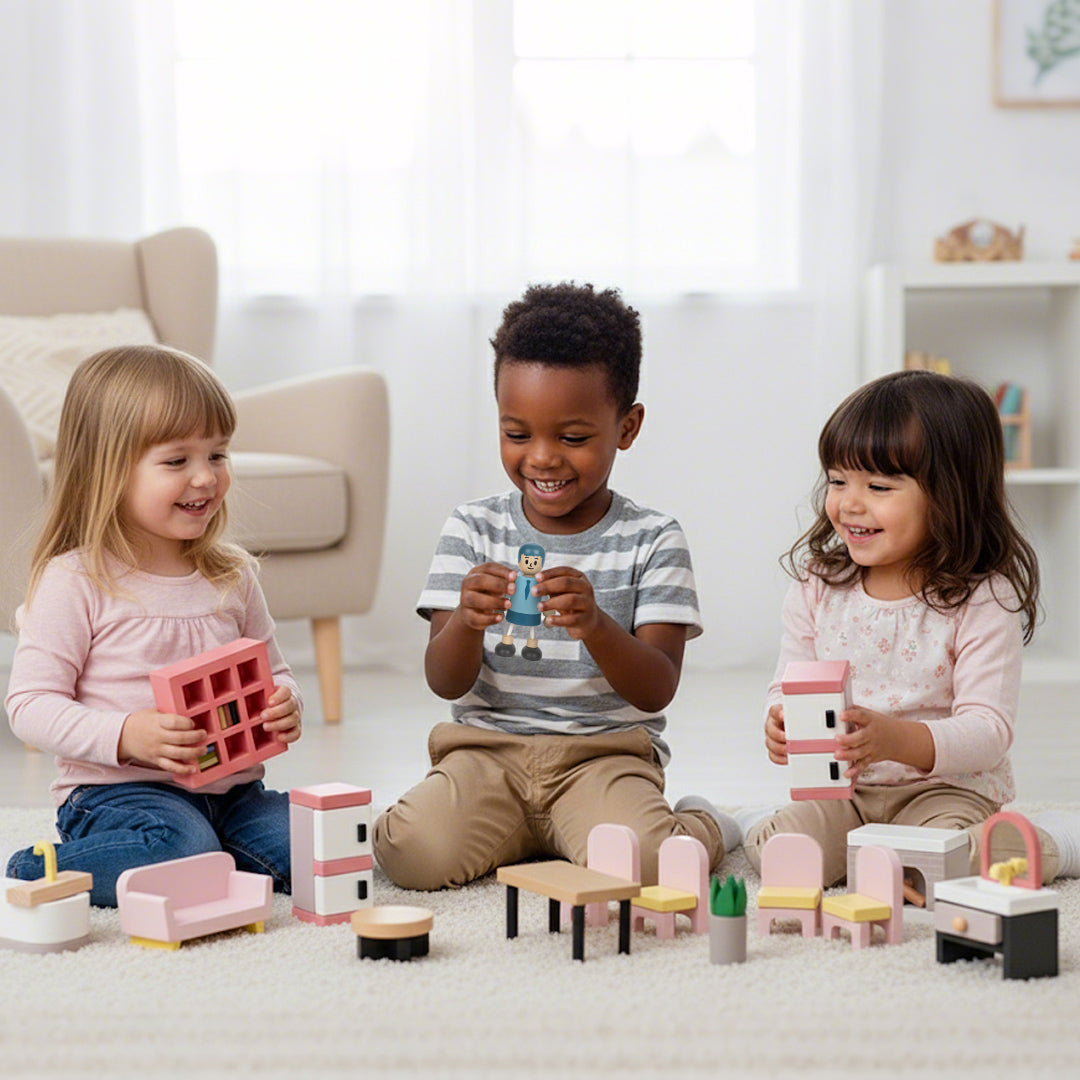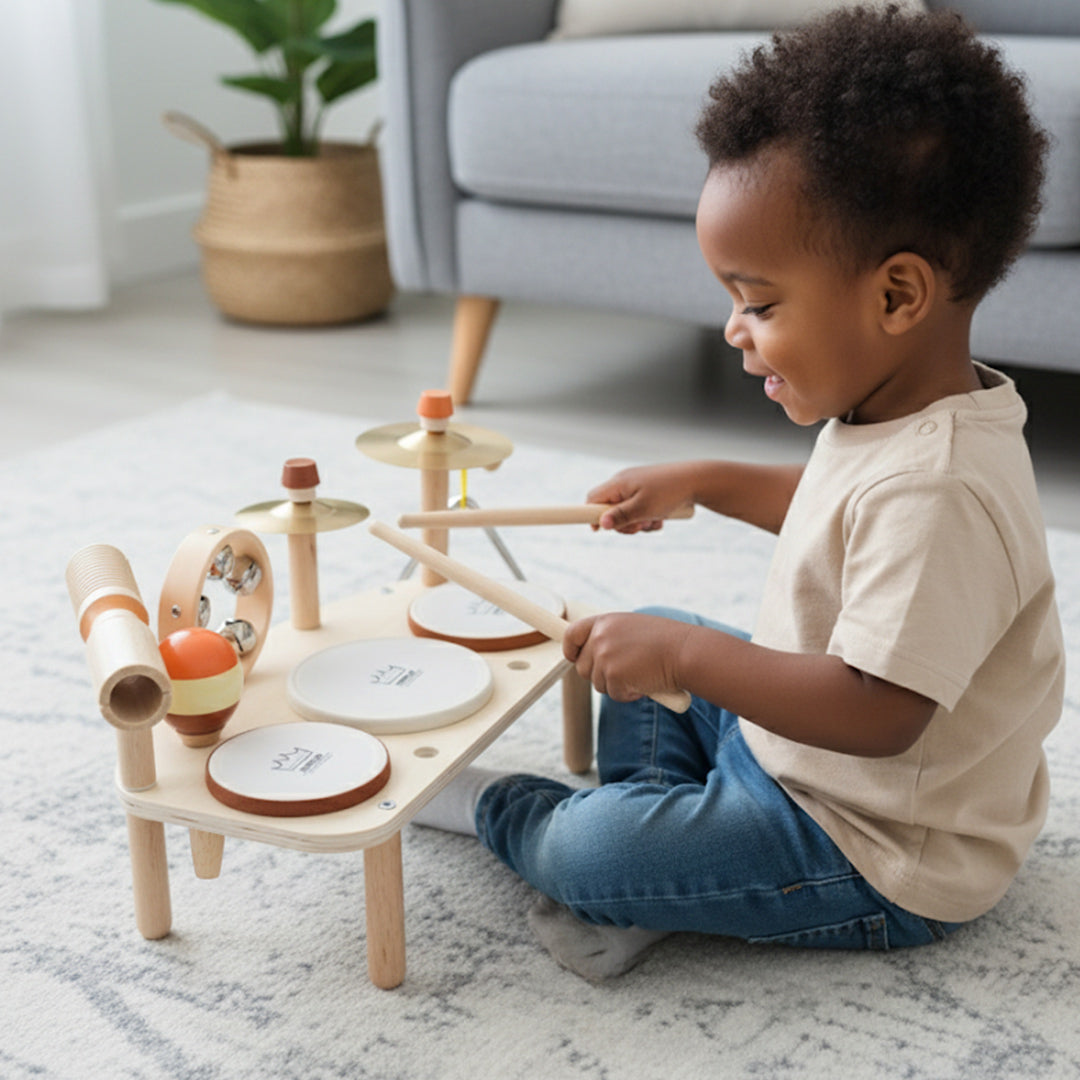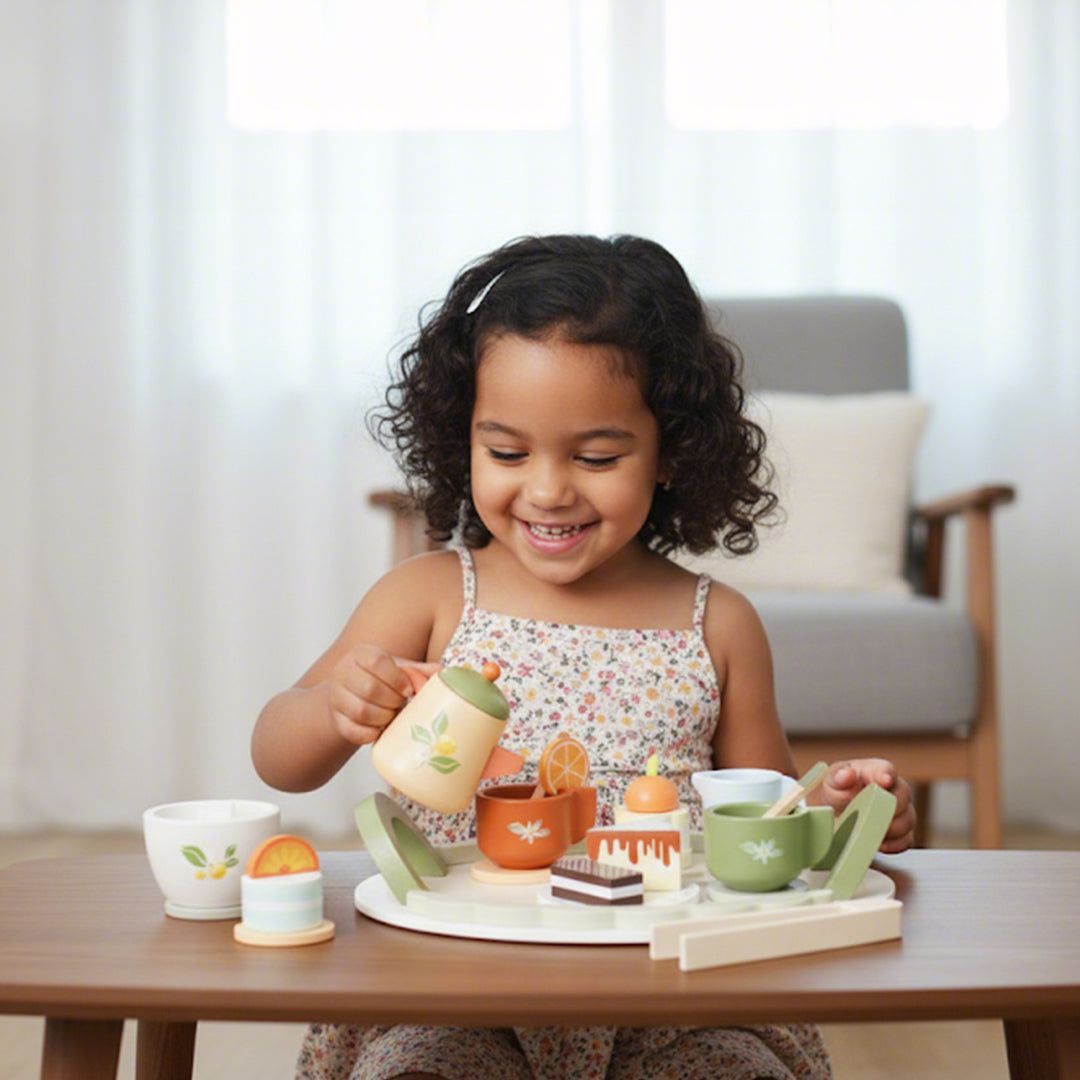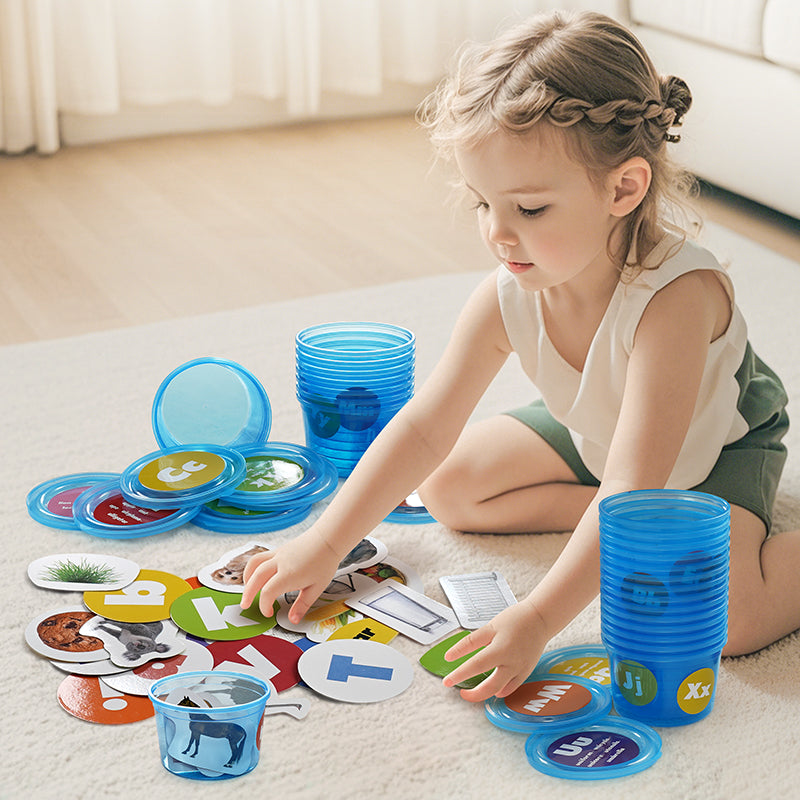Montessori Toys for 3-Year-Olds: Sensory Play Guide

By the age of three, children are in a stage of explosive sensory growth. Their little hands reach out to explore textures, and their noses lead them toward curious scents. This isn’t just play—it’s how they understand the world and build independence.
Montessori education emphasizes that touch and smell are not small details; they are core experiences shaping focus, self-awareness, and emotional connection. For parents, the real question isn’t why it matters, but how to make it fun, safe, and engaging at home.
Touch: Let Little Hands Explore the World
Touch is a child’s first tool for discovery. At age three, tactile play improves fine motor skills, builds hand strength, and sparks imagination.
Play Ideas for Touch Development
- Sensory Basket: Fill a small basket with safe objects like smooth wooden blocks, fluffy fabric, brushes, and scarves. Let your child feel and compare.
- Texture Walk: Create a simple path with a rug, grass mat, and wooden floor panels. Invite your child to walk barefoot and notice the differences.
- Montessori Wooden Toys: Choose puzzles, cylinder blocks, or stacking toys. These Montessori toys for 3 year olds combine play with rich tactile exploration.
With a montessori toy, the focus is always on simplicity and depth. A single wooden block can hold a child’s attention longer than a noisy gadget, because it encourages imagination instead of distraction.
Smell: Capturing Memories Through Scents
Smell is closely linked to memory and emotion. For a 3-year-old, scents can anchor experiences—like peeling an orange in the kitchen or smelling flowers in the park.
Play Ideas for Smell Development
- Kitchen Helpers: Invite your child to peel oranges, crush mint leaves, or smell coffee beans.
- Smell Jars: Prepare small jars with items like lemon peel, cinnamon sticks, and herbs. Have your child close their eyes, sniff, and guess.
- Nature Walks: Take your child outdoors and encourage them to explore the scents of flowers, plants, and fresh air.
These activities don’t require fancy tools—just everyday items. The result? A stronger sensory vocabulary and joyful family moments.
When a Child Resists Touch or Smell
It’s common for 3-year-olds to resist sticky textures or strong scents. This isn’t a problem—it’s part of being in a sensitive period of development.
- For touch-sensitive children: Start with smooth and pleasant textures like silk scarves or montessori wooden toys. Slowly add more challenging textures like clay or sand.
- For smell-sensitive children: Avoid forcing strong scents. Offer mild ones, such as apple slices or chamomile tea, and build from there.
The Montessori philosophy of freedom within limits applies here: children should feel free to explore, but within a safe, inviting environment.
Do Montessori Toys Always Have to Be Wooden?
Not always, but there’s a reason why Montessori wooden toys are so popular.
- Natural feel: Wood is warm, sturdy, and satisfying to touch.
- Simplicity: Wooden toys usually have one clear purpose, making it easier for children to focus.
- Durability: They last for years, often becoming keepsakes or hand-me-downs.
Plastic toys can play a role, but they often distract rather than engage. Choosing fewer, high-quality Montessori toys for 3 year olds will provide more developmental value than filling a room with clutter.
How Many Montessori Toys Does a 3-Year-Old Need?
Here’s a Montessori secret: less is more. Instead of overwhelming children with choices, offer 5–10 toys at a time. Rotate them weekly or monthly, so toys feel new and exciting again.
This approach fosters focus and deeper engagement. A child with fewer toys will spend more time experimenting, problem-solving, and inventing new ways to play.
Language Growth Through Sensory Play
Touch and smell don’t just shape physical growth—they also support language development.
Imagine your child touching a wooden block and saying “smooth,” or smelling a lemon and saying “sour.” Each word becomes part of their sensory vocabulary, boosting communication skills.
Encourage this growth by:
- Describing textures and scents during play (“This wood feels rough,” “That flower smells sweet”).
- Reading books with sensory-rich language.
- Introducing comparison words like softer, stronger, or sweeter.
Montessori toys act as bridges—not just to motor development, but also to language and storytelling.
Conclusion: Simple Moments, Big Growth
At age three, touch and smell are powerful gateways for growth. With carefully chosen montessori toys for 3 year olds—especially natural, tactile Montessori wooden toys—you can create a world where your child learns through play.
Remember:
- Less is more: Choose fewer, higher-quality toys.
- Everyday life is the classroom: The kitchen, living room, and park are full of sensory opportunities.
- Follow the child: Respect their pace, but keep offering gentle new experiences.
Every touch, every scent, is your child’s way of saying:
“Look, I’m discovering my world.” 🌿✨
Maybe it will be helpful for you:
Recent Post

What Finally Helped My Toddler Speak Up?
If you’re a toddler mom, you already know how much emotional weight...

Joyreal Christmas Toys Deals 2025
Enjoy instant savings across nearly every category, from early lear...

How Wooden Montessori Toys Support a Sustainable Childhood
Most parents don’t say it out loud, but many feel the same quiet fr...

Top Christmas Gifts to Help Kids Communicate Better This Holiday Season
The holiday season brings joy, family bonding, and endless opportun...

How to Make DIY Printable Communication Boards
Communication is at the heart of every child’s development — and fo...

Top 5 Christmas Gifts That Bring Families Closer (2025 Guide)
Christmas isn’t just about the gifts — it’s about the moments we c...

Top Musical Christmas Gifts for Toddlers & Preschoolers 2025
Why Musical Gifts Are Perfect for Toddlers and Preschoolers Music h...

Joyreal AAC Devices Wholesale Partner
In today’s educational and therapeutic environments, speech therapi...

Joyreal AAC Device – Big Sale for Autism & Speech
Every Voice Deserves to Be Heard Imagine your child looking up at y...

How to Choose Safe & Educational Toys for Christmas 2025
When “Just a Toy” Means So Much More If you’re a parent, you know t...
